This weekend it’s time for the RSPB’s annual Big Garden Birdwatch! Every year, the charity encourages people all over the country to spend just an hour watching and counting the birds that come into the garden, and reporting those numbers via an online form. Over a million people took part in 2021, and the more people that do the birdwatch, the more useful the results are.
Conservation of wildlife is critical to preserving complex and often fragile ecosystems. Birds are a vital part of that. They regulate insect populations, help spread the seeds of many plants and trees, and can even help pollinate some plants. Understanding where numbers of specific birds have declined or increased can lead to more focused conservation efforts.
The big garden birdwatch is a great activity to do together as a family. Anyone of any age can take part, and it’s great to get kids noticing the nature in their own local area, gardens, or even sitting on a telegraph pole across the street. Encouraging children to consider the importance of wildlife from a young age can lead to a more mindful attitude towards the environment as they grow up.
As Pagans, it’s always interesting to explore the magical, folkloric, and mythological connections of birds too. Here are some of the birds you might see this weekend, and some aspects of their magical nature.
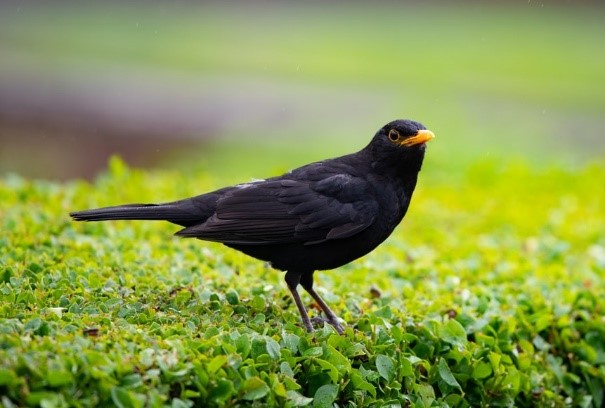
Blackbird
Rhiannon, a Celtic goddess or otherworldly being who features in the Welsh Mabinogi, is connected to three mystical birds, possibly blackbirds, who have the power over life and death. In Greek mythology, the blackbird would die if it ate the luscious seeds of the pomegranate, a tale which seems to link the bird to Persephone, daughter of Zeus and bringer of spring. The blackbird is most noisy at dawn and dusk, chirping out the boundaries of its territory. That’s probably why the blackbird is so closely associated with what is called “liminal” states – where one thing is changing to another.
Image shows a male blackbird stood on a lawn of small plants; his body is pointed to the right, but he is looking directly at the camera. Image by Derek Braithwaite via Unsplash
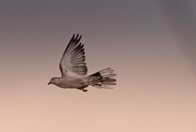
Collared Dove
In some cultures, the dove is associated with peace. However, in some South American countries, the sound of a cooing dove could actually mean bad luck! There was a superstition that you shouldn’t chase doves away, as this could anger the magic user who had sent them. Doves may also be associated with innocence.
Image shows a dove flying towards the left, its wings outstretched and tail fanned, against a background of lilac sky. Image by Lenstravelier via Unsplash.
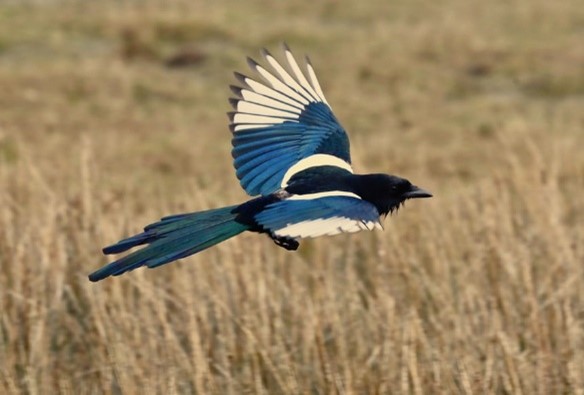
Magpie
Magpies are large and very noticeable, with their stunning black, white, and iridescent plumage. Magpies are associated with superstition and luck, both good and bad. Many people still count the magpies they see and use rhymes to see what luck will bring them:
One for Sorrow
Two for Joy
Three for a Girl
Four for a Boy
Five for Silver
Six for Gold
Seven for a Secret
Ne’er to be told.
There are many variations on this rhyme, which may be regional. It’s also thought that by saluting the magpies and/or greeting them verbally, you could negate any ill luck.
Image shows an adult magpie with plenty of blue iridescence showing in its wing and tail feathers, flying to the right of the image above a field of dried out grass. Image by Proinsias Mac an Bheatha via Unsplash.
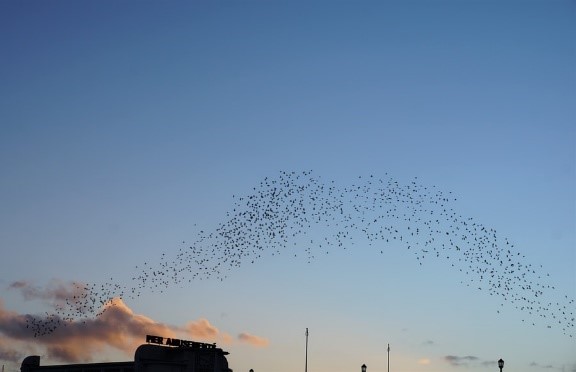
Starling
Starlings are numerous, especially in urban and suburban areas, but in winter many UK starlings are actually migrants from colder countries. When many starlings flock together in the sky, they can form huge, swirling clouds called murmurations. Watching a murmuration flow and change can be almost hypnotic. Starlings are also excellent mimics. This skill gives them important roles in folklore and mythology, including being a messenger for Branwen in the Mabinogion.
Image shows a huge murmuration of starlings that stretches across a blue sky with just a few pink tinged clouds above barely visible top of Worthing Pier. Image by Huey Images via Unsplash.
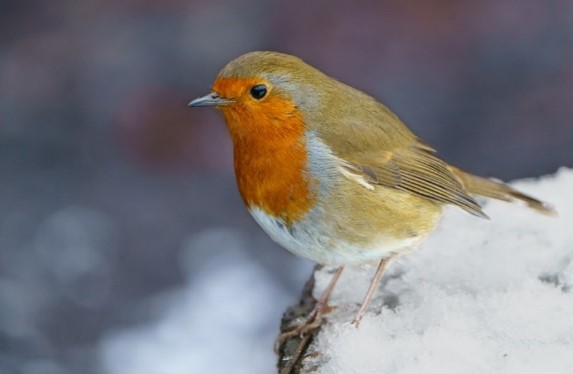
Robin
Robins are actually present in the UK all year round, but perhaps more noticeable in winter as other species migrate away. Robins are brave and will often come very close to humans, especially if you’ve been turning the earth in the garden or allotment and there’s the chance of a juicy worm! Robins are associated strongly with courage, strength, and fierceness. The robin’s message is never to judge something by its size!
Image shows a robin looking to the left, perched on something covered in snow. Image by Amee Fairbank-Brown via Unsplash.
There’s still time to sign up and take part in the birdwatch, simply visit the RSPB website and click on “How to take part”. Let us know what birds you see this weekend, or come chat to us about anything over at our Children and Families Facebook Group.
Mabh Savage,
Children and Families Secretary
All images copyright free via Unsplash
